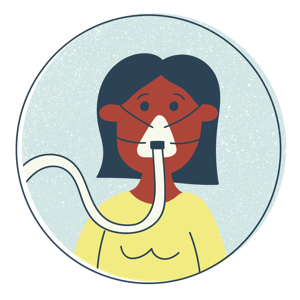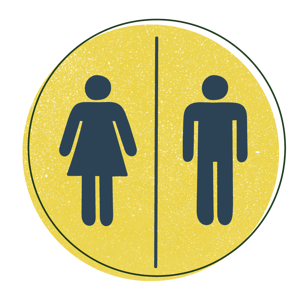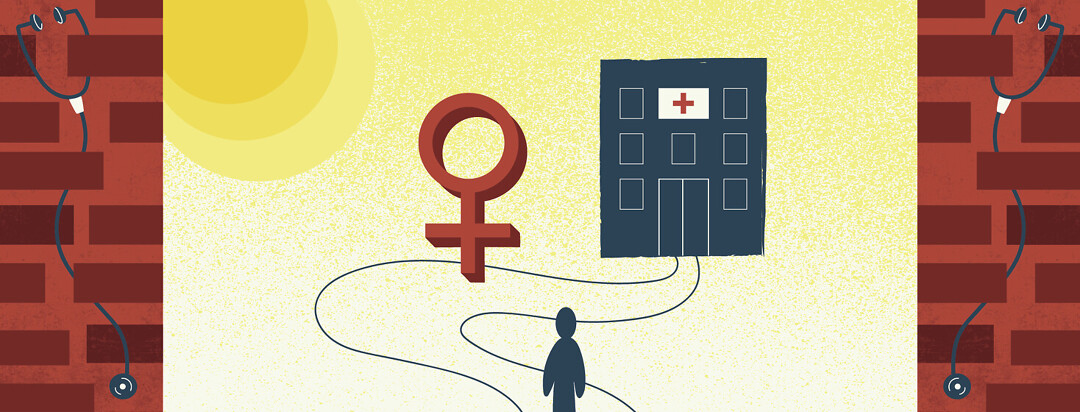Millions of Women Living With OSA Need Diagnosis and Treatment
This article is third in the series: Sleep Apnea’s Health Disparities.
A myth persists about obstructive sleep apnea (OSA), that it only occurs in obese, middle-aged men.
However, many young people (even young children) have OSA. Thin, fit people can have it. And most assuredly, women live with OSA, though they aren’t always diagnosed and treated for it.
It’s estimated that 5 percent of women in the United States have moderate or severe OSA. In 2020, 5 percent of 166.24 million women in the US equals more than 8 million women with OSA.1
It’s time for doctors – and patients – to retire these stereotypes.

Why do these stereotypes exist?
Most US medical schools require only 2 to 4 hours of sleep medicine training for students to graduate despite confirmed links between untreated sleep disorders and major conditions like heart disease, mental illness, diabetes, and dementia.2,3
Given there are more than 80 kinds of sleep disorders, this suggests students receive only a shallow education on sleep disorders which likely relies on generalizations that do not actually represent the realities of actual patients.4
The reality: Women with OSA remain underdiagnosed
More than 90 percent of women with moderate to severe OSA were estimated to be undiagnosed in a major study published in 1997.5
Let’s do the math: Based on 2020 census statistics, of the more than 8 million women estimated to have OSA, only about 600,000 of them are diagnosed and treated.1,5
Research published 2 decades later confirms that little has changed since the late 90s: significant gender bias remains the primary reason why women with OSA remain undiagnosed.6
OSA symptoms by gender
Medical professionals need to – but don’t always – recognize that men and women experience and show OSA differently. For instance, the symptoms in women with OSA don’t match a “textbook” definition.6
“Classic” OSA symptoms in both men and women include:
- Snoring
- Excessive daytime sleepiness (EDS)
But women more frequently complain of:
- Nightmares
- Palpitations
- Insomnia
- Depression
- Headaches
- Anxiety
- Restless legs
The use of the Epworth Sleepiness Scale may be at the heart of the matter. The Epworth measures EDS, but it’s calibrated to measure levels more biologically accurate for men.6
Meanwhile, women complain less of EDS. Their symptoms point to other factors like age, BMI (body mass index), blood pressure, snoring, and witnessed apneas. Yet, because doctors rely so heavily on the Epworth to diagnose OSA, women’s cases are frequently overlooked.6

OSA disease course by gender
Even when women with OSA receive a diagnosis, doctors may not fully understand the mechanisms of the sleep disorder, which differ between men and women.7
For instance, OSA impacts men and women differently in these areas:
Upper airway collapse
Men experience greater upper airway collapse than women due to longer airway lengths and more soft tissue associated with airway collapse.
Fluid displacement
We all collect fluid in our lower extremities. But at night, as we recline to sleep, that fluid shifts to other areas of the body, including the neck. This shift, which accounts for upper airway narrowing, differs between men and women.
Hormones
“Low T” (reduced testosterone) in men, linked to obesity, aggravates OSA. Meanwhile, postmenopausal women’s changing hormone levels lead to functional shifts in the upper airway’s dilator muscles. Pregnancy hormones may also increase a woman’s risk for developing OSA.
Obviously, OSA isn’t "all in your head"
Generally, healthcare bias against women leaves many feeling dismissed. Women commonly describe being told by doctors that their symptoms are:8
- Just signs of stress
- Psychosomatic (imagined)
- Nothing to worry about
Assertive patients with time, money, and benefits will seek out other opinions until they land with a doctor who identifies a real condition, like OSA.
Meanwhile, other women with less time, money, or benefits may feel too demoralized to pursue their very real complaints further.
Chronic sleep disorders like OSA don’t go away if ignored. OSA requires a sleep study, diagnosis, and customized treatment. These are things many women will never receive.
Moving toward inclusivity
“Even when presenting with snoring and sleepiness, and in the presence of comorbidities, women are less likely to be evaluated for OSA,” scientists have commented. “Symptom burden and poor health outcomes have been documented in women with OSA and treatment improves their health.”6
They propose 3 solutions to ensure women receive adequate care for their sleep disorder:6
- Medical professionals should receive more and better primary care education surrounding OSA in women.
- The “classic” OSA definition should be updated and made more inclusive.
- Screening tools should be adapted to recognize OSA more accurately in women.
This article is part of a series: Sleep Apnea’s Health Disparities. Check out the other articles in this series!

Join the conversation